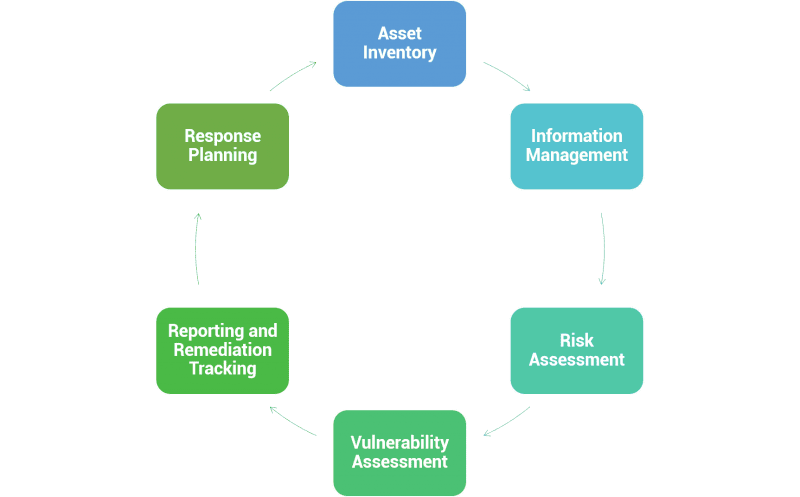As the Nigerian government begins the gradual easing of coronavirus restrictions in major cities of the country – after a month-long lockdown, many organisations are now seeking adaptive strategies to rapidly address the changing needs of their people, customers and suppliers. With every industry, sector and function affected, the amount of potential change to think through can be overwhelming. However, in the crucible of such events, resilient organisations are defined first by who they are and how rapidly they respond through the “new now”.
To survive and thrive in this new environment, a robust strategy, organisational agility, decisive leadership, data-based responsiveness, and the ability to reshape quickly are critical assets an organisation needs to navigate through the “new now”
Below are seven (7) priority areas organisations can leverage to navigate through the “new now” successfully:
1. Rework a Rolling Quarterly Strategic Plan
Operational strategies and short-term wins established at the beginning of the year – 2020 have been rendered irrelevant. As experts predict a gradual economic recovery in some sectors and accelerated recovery in other industries. As a firm, you need to re-strategise to keep business operating – take a strategic approach to rework plans by revisiting the organisation’s vision, then deconstructing objectives into a new set of priorities and actions starting from today’s adjusted baseline. Initially set sights on results through year-end 2021, distilled into six quarterly milestones and adjusting subsequent quarterly expectations as the economy moves toward a new normal.
2. Intentional Discontinuation
Reduce business operations and activities to only business-centred services. Before assuming reactivation of all previous regular activities, take inventory of what resource investments no longer serve the interest of the business. This means identifying activities, processes, products, or services that can be eliminated. By exploring questions about which activities have outlived their usefulness, organisations can free capacity to apply more effectively in the “new now”.
3. Create New Business Offerings
What new services has your organisation observed with clients/customers during the pandemic phase that may be of benefit in a new normal? Throughout history, new ideas and innovative business offerings have emerged from extraordinary seasons. During World War I, to help soldiers avoid being distracted by their pocket watches, manufacturers attached straps to the watch faces they produced. The idea was not new; however, demand for wearable timepieces grew significantly following the war, allowing innovative-thinking manufacturers a meaningful long-term business opportunity.
4. Rapidly Recover Revenue through Prioritisation of Revenue Opportunities
This strategy centres on the identification and prioritising of your organisation’s primary source of revenue and leveraging them before the recovery period kick-starts. This may include initiation of targeted campaigns to win back loyal clients/customers; developing customer experiences focused on increased health and safety measures; cost optimisation – adjusting pricing and promotions based on insights; reallocating spending to proven growth sources; reskilling the sales force team to support remote selling by undertaking relevant digital training courses; creating flexible payment terms; digitising sales channels and social engagements, and automating operational processes to free up sales representatives to sell more.
5. Adaptive Vulnerability Strategy Plan
Organisations often misinterpret disruption as an activity initiated by a competitor or a new entrant to their market. However, the COVID-19 pandemic reveals there are other sources of business and environmental disruption. This insight can be adopted as a vulnerability management strategy put in place by your organisation to hedge against future disruptions as your organisation would probably do to an industry challenger. The optimal approach to creating an effective vulnerability management strategy is to use a vulnerability management life cycle equipped to mitigate vulnerability challenges in an orderly approach.
6. Accelerate Digital Adoption
During this phase, your organisation may face some fundamental challenges due to the present digital transformation that have rapidly changed the way we work and interact. These changes have quickened the migration to digital technologies at stunning scale and speed, across every business space and sector. To address these susceptible challenges, your organisation will need to set a daunting digital schedule—and deliver it speedily, on the order of two to three months, as opposed to the previous norm of a year or more. Refocus digital efforts to reflect changing customer expectations, adopt the use of data, Internet of Things, and AI to manage operations better, embrace the acceleration of tech modernisation, and Increase the speed and productivity of digital solutions.
7. Development Opportunities
Several organisations have learned about the efficacy of business continuation plans through the COVID-19 crisis phase. They have also observed the strengths and developmental needs of teams as the nature of customer engagement and operations adapted quickly during the crisis phase. How can you use these observations and learnings to build a long-term development plan for your organisation?
At Phillips Consulting (pcl.), we help organisations build agility and resilience through the planning and effective execution of an adaptive business strategy. We understand the importance of a long-term development plan for organisations and the critical role a resilient corporate strategy plays in the survival of businesses. During these challenging times, we can help transform your business, guiding you through every step, from strategic planning through to implementation. Plus, the strategies to create more flexible structures and processes that grow your organisation’s capability and performance.
In a rapidly changing environment, it is the agile and resilient organisations that have a much better chance to survive—and thrive. The next “new now” is already being defined today. This is the time to develop your plan on how your organisation will navigate its next chapter.
Written by:

David Edozie Onochie

